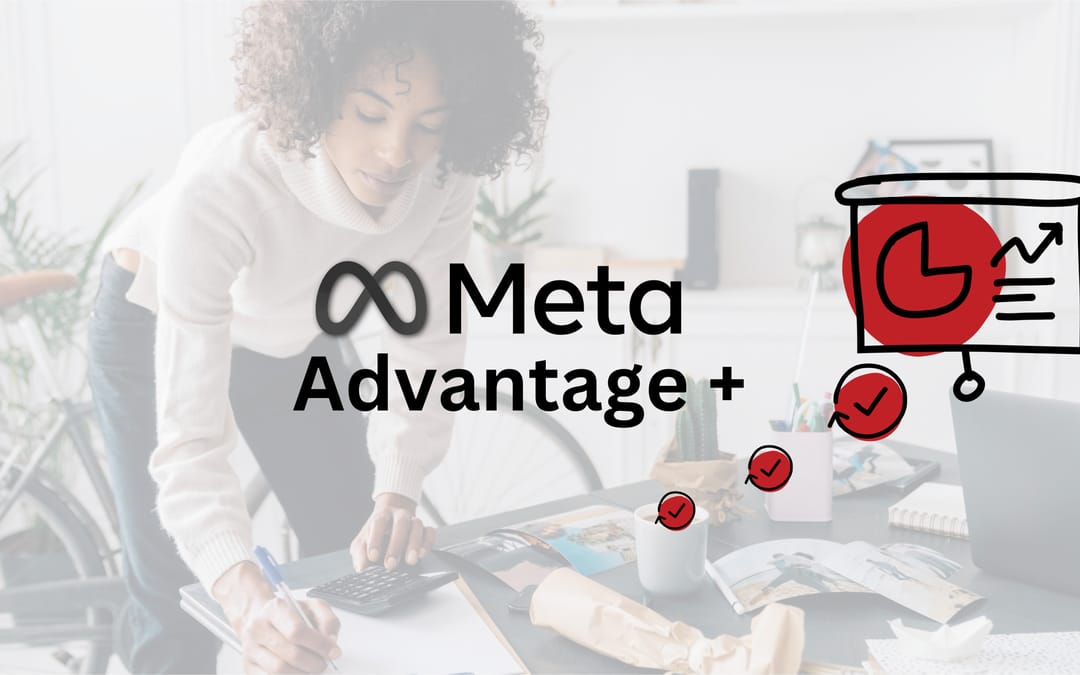
SaaS Platforms Are Cutting Costs & Complexity for eCommerce Websites in 2024

2024 SaaS Platforms for eCommerce Websites
The development of SaaS solutions and platforms for eCommerce is an integral part of the industry’s recent history, with significant shifts that have empowered businesses to lower website operating costs while improving site stability, security, and performance. Ultimately, this increases customer engagement and frees up budget space for marketing to drive more traffic and sales.
The shift from traditional on-premises applications like Magento (Adobe Commerce), WordPress, and many other legacy platforms to SaaS parallels the broader digital transformation. SaaS in eCommerce specifically has been a game changer for small to medium-sized merchants. The transformation has been marked by SaaS platforms’ ability to drive down maintenance costs while improving performance, security, and stability. Shopify and BigCommerce are leading the way in the eCommerce SaaS sector, creating industry-wide waves much like Salesforce did with its revolutionary CRM product.
The foundation of SaaS can be traced back to the 1980s and 1990s, with the emergence of Application Service Providers that provided software and services over the Internet. However, it wasn’t until the early 2000s, with improved internet infrastructure and the decrease in cloud computing costs, that SaaS began to flourish. Salesforce is often credited as the first successful SaaS provider, launching in 1999 and setting the stage for the popularity of SaaS across industries, including eCommerce.
Are you seeking to start selling online or for a new eCommerce website builder? InteractOne is proficient in optimizing and managing web design. Our expertise lies in eCommerce optimization and development, so don’t hesitate to reach out to us for assistance.
Evolution of SaaS in eCommerce Websites
The evolution of SaaS in eCommerce has been a game-changer for the industry, altering its very landscape. SaaS is not new to eCommerce, with the first SaaS platforms like Volusion and Yahoo Stores coming online in the late 1990s. These early offerings, however, failed to gain traction with mid to large-scale businesses due to their lack of flexibility and limited APIs. Shopify, BigCommerce, and Demandware (now known as Salesforce Commerce Cloud) entered the SaaS eCommerce arena in the mid to late 2000s. Shopify and BigCommerce were slow to grow with the mid-market since, at that time, they had limited features, APIs, and third- party ecosystems, including apps and integrations. Also at this time, most mid-market and enterprise eCommerce merchants were choosing to go with on-premises solutions that provided flexibility and performance that SaaS could not supply.
However, DemandWare took a unique approach and tailored its SaaS offering to suit apparel merchants well. With this approach, they soon became the first eCommerce SaaS platform to achieve scale in the mid-market.
The Rise of SaaS in eCommerce
In the 2010s, BigCommerce and Shopify began to catch up with DemandWare in the mid-market as they greatly improved their APIs, native features, and third-party ecosystems. These SaaS platforms started enabling mid-market merchants with standard eCommerce B2C needs to set up online stores with relative ease and at lower costs compared to traditional on-premises solutions, like Magento or WordPress. Shopify and BigCommerce have made a significant impact by providing scalable, secure, and user-friendly platforms that are accessible to a wide range of businesses.
The development of SaaS solutions has not been without its challenges. A significant hurdle has been ensuring the robustness of APIs. In a SaaS model, APIs are the lifeline of the software, as they are essential for integrating various services and functionalities that eCommerce platforms need to provide a seamless user experience and create custom website functions. Unlike on-premises solutions, where developers have direct access to the core code and database, SaaS platforms require more complex and robust APIs to connect custom apps, other software applications, and data sources.
Robust APIs are crucial because they allow eCommerce platforms to integrate with third-party services, such as payment gateways, inventory management systems, ERPs, and CRM tools. This integration is essential for creating a cohesive and efficient system that can handle the intricate processes of online retail.
SaaS for Managing eCommerce Website Design
As eCommerce continues to grow at an unprecedented rate, managing custom user experiences and large volumes of data becomes a critical need. SaaS solutions must be capable of providing unique user experiences (UX/UI) while handling a high number of transactions and vast amounts of data. Robust APIs allow for the management and integration of large data as well as custom UX/UI through headless solutions that separate the frontend presentation layer of an eCommerce site from the backend eCommerce functionality. Headless solutions offer greater flexibility and performance by allowing developers to create custom, highly performant user experiences empowered by SaaS backends.
This evolution towards more prevalent use of SaaS over on-premises solutions marks a pivotal shift in eCommerce. On-premises platforms, once the go-to for businesses seeking customization and control, are being outpaced by the performance, security, and ease of use offered by SaaS platforms. The SaaS model’s ability to simplify complex processes and lower the barriers to entry for online commerce is proving to be a compelling reason for its growing dominance in the market.
The trajectory of SaaS in eCommerce is fueled by a continuous push towards higher performance and lower costs, driven by the need to solve complex challenges and cater to the ever-evolving demands of eCommerce businesses. As the industry moves forward, the significance of SaaS platforms is likely to grow, leading to even more sophisticated solutions.
Benefits of SaaS Platforms for eCommerce Stores
When comparing SaaS to open-source solutions, several key benefits of SaaS platforms become evident:
Enhanced Website Security:
SaaS platforms typically offer better security due to their closed system architecture. This differs from on-premises, open-source platforms like Magento, where the code is accessible to everyone. Open-source solutions can be more vulnerable to security breaches because hackers can easily gain access to the source code and work to find exploitable weaknesses. Then, when patches are released for open-source code, it takes time for the community and merchants to implement the new code. Conversely, the core code of SaaS platforms is closed to the public and cannot be viewed by hackers in order to find vulnerabilities. SaaS providers continuously update and monitor their code and systems. This means they can quickly deploy new core code changes and security updates to all of their customers at once.
Stability & Customization:
The microservices architecture prevalent in SaaS-powered websites contributes greatly to their stability. Customizations must be created as apps that sit outside of the core codebase and cannot override any of the SaaS core code. This architecture allows different components of an online store to be developed, deployed, and scaled independently, reducing the risk of system-wide failures. However, this can introduce limitations in customizing the core code compared to open-source solutions, where developers have complete access to modify the system at a fundamental level. For example, it is typically not possible to customize or override core features of the order workflow with SaaS eCommerce software and do things like edit order numbers, charge for shipping after order placement, or develop sophisticated B2B shipping or payment options.
Maintenance and Upgrade Development Costs:
Maintenance and upgrade development costs are generally much lower with SaaS platforms. This is because the SaaS provider manages the core code infrastructure and platforms for all of its clients in mass, which includes handling updates and maintenance of the core code. This means that as long as the SaaS application APIs are not changed (which they normally are not), third-party apps, integrations, and custom apps don’t need to be updated with every SaaS core code update. The simplicity of this model means that upgrades are often seamless and do not require extensive downtime or complex migration processes, which is a common concern with on-premises or open-source solutions.
Performance & Developer Flexibility:
SaaS platforms are designed to auto-scale, provide high performance, and are not likely to slow down under normal increased traffic loads. In other words, they are purpose-built to be scalable and efficient for all the sites on their platform. Open-source platforms like Magento may face challenges in maintaining performance since scalability depends on the hosting provider, third-party apps, and customizations. One flawed update could cause site-wide complex issues, downtime, lost sales, and costly fixes due to the monolithic nature of on-premises software, meaning apps are usually not decoupled from the core application.
SaaS platforms also tend to offer greater developer flexibility. Since SaaS solutions are cloud-based, developers can build custom apps using various technologies without the need to understand the core architecture or manage servers. This allows for the creation of unique features and functionalities that can be integrated with the SaaS platform through APIs, whereas open-source solutions require a deeper knowledge of the core system for extensive customization.
SaaS platforms stand out for their enhanced security, stability, cost-effective maintenance, and superior performance, along with offering developers a flexible environment for innovation without the need for in-depth infrastructure knowledge. These benefits make SaaS an attractive option for many businesses looking to leverage eCommerce solutions.
SaaS Limitations in eCommerce
SaaS platforms, while revolutionary in their approach to eCommerce, do face certain challenges when meeting the complex demands of modern businesses.
Handling Extensive Inventories in Online Businesses
For businesses with large and varied product ranges, SaaS platforms can sometimes stumble. They are built for scalability but have inherent limits that can hinder the seamless management of extensive product catalogs.
Confronting Database & API Constraints
The streamlined nature of SaaS platforms means direct database manipulation is always off-limits, leading to a reliance on APIs. This dependency can introduce performance issues such as bottlenecks, particularly when scaling up operations due to rate limits and potential latency in data exchange.
Best Practices for Navigating B2B Ecommerce Site Requirements
The B2B sector often entails intricate eCommerce processes, which can be at odds with the more generic B2C-oriented design of many SaaS platforms. Complex order processing and specialized workflows required in certain B2B transactions can be tough to implement within the standard offerings of a SaaS platform.
Adapting to Sophisticated Pricing Mechanisms
SaaS solutions may also struggle with intricate pricing models that are commonplace in B2B contexts, like tiered pricing or customer-specific discounts. Such nuanced pricing strategies often demand a level of customization and flexibility that open-source platforms are inherently equipped to handle.
Product Restrictions or Bans
SaaS providers have been known to restrict the types of products they allow to be sold on their platforms. If certain types of products do not agree with a SaaS platform company’s core values, they may restrict or not allow merchants to sell those products—for example, firearms and CBD. Also, in the past, SaaS platforms have made quick decisions about certain products or types of merchants to ban from their platform and have given merchants very little and often insufficient time (i.e., two weeks) to move off their platforms.
When On-Premises, Open-Source Is the Answer
These challenges point to scenarios where on-premises open-source platforms could be more beneficial. Open-source software grants the liberty to extensively customize the system, aligning with the unique and complex requirements of a business. This can be especially important for companies that operate with highly specialized business models or those that need granular control over their eCommerce ecosystem.
In light of these considerations, businesses must carefully evaluate the capabilities and constraints of SaaS platforms against their specific eCommerce needs to determine if a SaaS or open-source solution is the right technological choice for their online strategy. Working with an eCommerce platform consultant like InteractOne, who has years of real-world experience developing solutions with SaaS or on-prem open-source software, can be critical to making the right decision.
2024 Comparison of SaaS vs Open-Source Platforms
When considering SaaS vs open-source platforms for your eCommerce needs, it’s essential to understand the core differences and how they can impact your business.
SaaS Platforms:
Pros:
- Ease of Use: SaaS platforms are known for their user-friendly interfaces and ease of setup, which can be ideal for businesses without technical expertise.
- Maintenance & Hosting: The SaaS provider manages hosting, maintenance, and updates, reducing the workload for your team.
- Security: Enhanced security is typical of SaaS platforms, given that access to their core code is closed and very protected.
- Scalability: SaaS solutions can easily scale with your business, handling increases in traffic and transactions smoothly.
Cons:
- Customization Limits: There may be restrictions on how much you can customize the platform, as you don’t have access to the source code and cannot override or change core functions
- Ongoing Costs: While maintenance costs can be lower, the subscription-based model means ongoing license expenses, which typically increase every year.
- Integration Dependencies: You will be reliant on the platform’s APIs and existing integrations, which can limit flexibility.
- Business Risk: SaaS providers can change their terms and conditions at any time and may decide to stop providing services for certain types of products (i.e., firearms) or markets (i.e., geo-political issues).
Open-Source Platforms:
Pros:
- Customization: Complete freedom to customize the platform to your exact specifications due to access to the source code.
- Community Support: Robust communities where developers share tools, plugins, and advice can be a rich resource.
- Control: Full control over your hosting environment, security protocols, and updates.
Cons:
- Technical Expertise Required: Requires a certain level of technical skill to manage and customize effectively.
- Maintenance Responsibility: Your team is responsible for updates, security, and maintenance, which can be resource-intensive.
- Security: While you have control over security, it also means you are fully responsible for implementing and maintaining it. And don’t forget—hackers have unlimited access to the core code of your website application and are always looking for vulnerabilities to exploit.
Each type of platform has its merits and can be the best choice depending on specific business needs. SaaS platforms are generally best for businesses looking for ease of use, minimal maintenance, and scalability. In contrast, open-source platforms are ideal for those requiring deep customization and control over their eCommerce environment.
Our Take: Picking the Best eCommerce Website Platform
The architectural robustness of SaaS solutions is a significant advancement over traditional on-premises platforms. With SaaS, the core code remains intact and unalterable, compelling businesses to innovate through the creation of independent applications for additional features and functionalities. This approach not only futureproofs your eCommerce website, but also substantially reduces maintenance and support costs.
It’s clear that SaaS platforms are becoming the preferred choice for many eCommerce businesses. They offer a streamlined, reliable foundation for businesses to build upon, ensuring that they are well-equipped for the demands of modern commerce. The move to SaaS is not just about keeping up with technology trends—it’s about embracing a structure that positions businesses for long-term success.
Choosing the Best eCommerce Platform for Your Online Store
Choosing the right platform for your eCommerce business is a critical decision that can have long-term impacts on your operation’s success. In order to make a good, well-informed decision, we recommend working with a platform specialist like InteractOne. At InteractOne, we specialize in providing development services for SaaS platforms like Shopify and BigCommerce, as well as open-source platforms like Adobe Commerce, Magento, and WordPress. Transitioning to a new eCommerce platform is a significant undertaking, and we are here to guide you through every step of the process.
Our platform consulting process includes:
Assess Your Business Needs:
Start by understanding your specific business requirements. Consider the size of your product catalog, the expected volume of sales, the geographic reach of your business, and the level of customization you need in your website design.
Technical Capabilities:
Evaluate your team’s technical skills. Some platforms are more user-friendly for non-technical users, while others might require more advanced knowledge or even developer support.
Scalability:
Think about where you see your business in the next few years. You need a platform that can scale with your business, handling increased traffic and sales without compromising performance.
Budget:
Understand the total cost of ownership of the platform, including subscription fees, transaction fees, add-ons, and any additional tools or services you might need to sell online.
Ecosystem & Integration:
Look at the ecosystem surrounding the platform. The availability of third-party apps, plugins, and integrations can greatly enhance functionality.
Support & Community:
Consider the level of support offered by the platform. A strong community and responsive customer service can be invaluable to building a great eCommerce website.
Compliance & Security:
Ensure that the platform complies with the necessary legal and security standards, especially if you operate in multiple regions with different regulations.
Futureproofing:
Choose a platform that is innovative and keeps up with eCommerce trends. This will help you stay competitive and adaptable in a rapidly changing market.
With our expertise, you can navigate the complexities of platform selection and migration for your eCommerce store. InteractOne will help you make a smooth transition to the right solution to maintain and to build an eCommerce business online.
Drop Us a Line At:
Our Contact FormOr, if you prefer an old-fashioned phone call: Phone (USA): (513) 469-3362
4665 Cornell Rd. Suite 255 Cincinnati, OH 45241



















